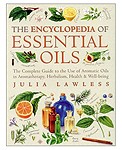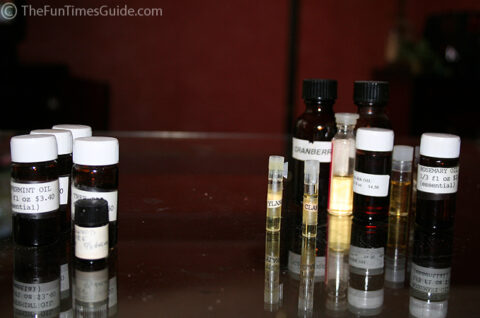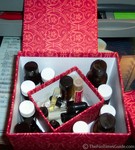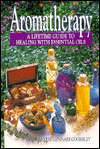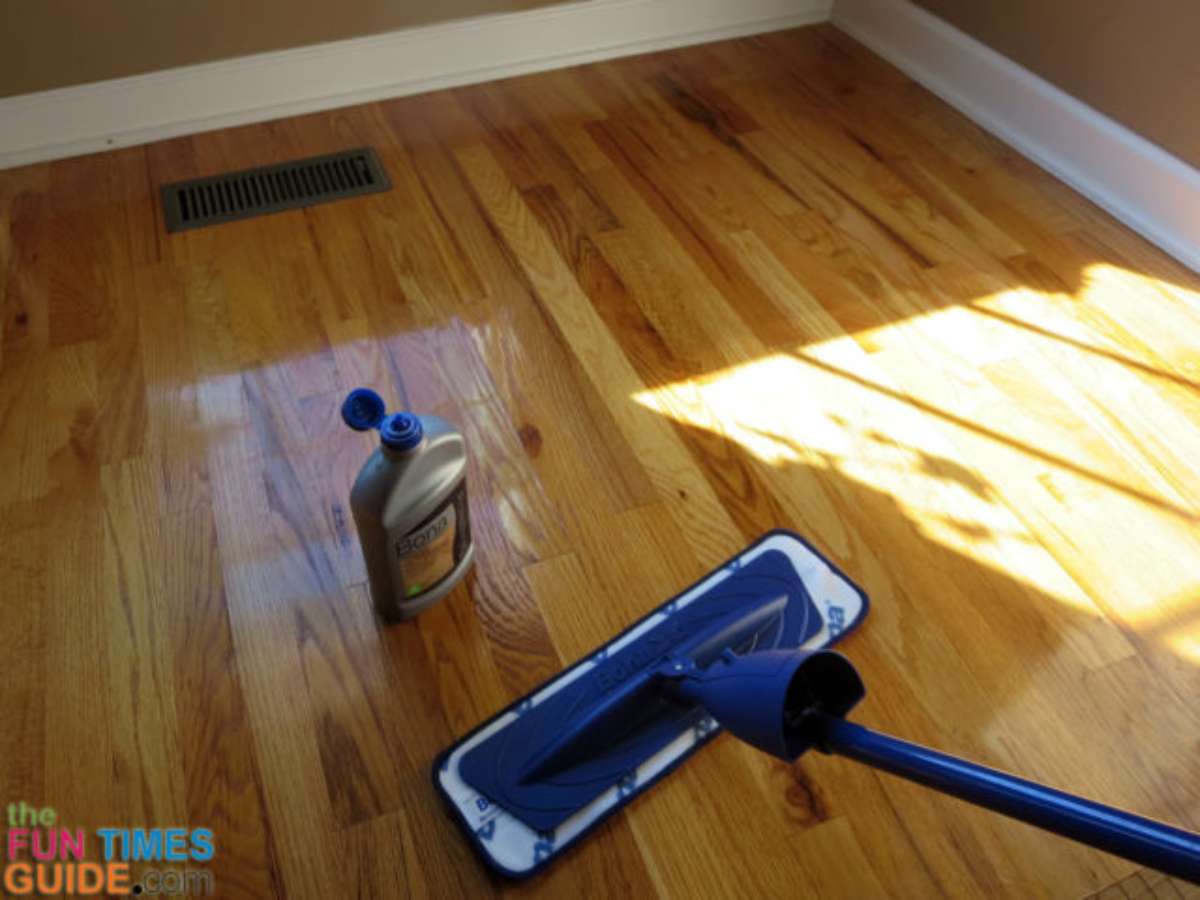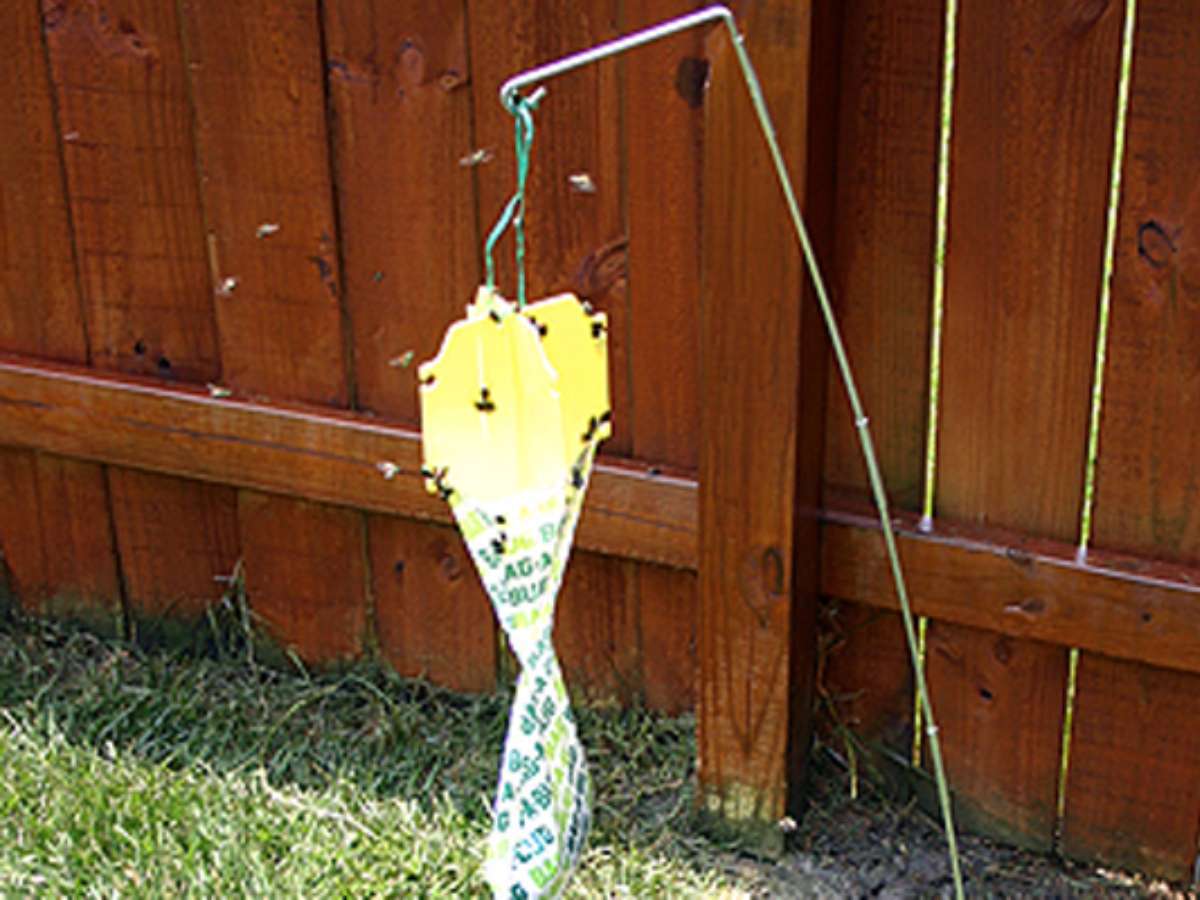Ever wonder what some peoples’ Essential Oil collection looks like?
For the record, I’m far from an expert on this topic. I’ve just been dabbling in aromatherapy for the past 8 years or so. In that time, I’ve discovered my favorites. And they seem to coincide with the lists of “most popular” Essential Oils these days.
Here’s what my Essential Oil collection looks like…
Top 10 Essential Oils
The following list of Essential Oils that I personally own just happen to be among the most popular Essential Oils that are used in aromatherapy these days.
I tend to keep aromatherapy oils on hand at all times because they are the ones I use most frequently in my home:
#1 – Bergamot
Why it’s great:
- It refreshes and balances the emotions and is especially useful in times of anxiety and when dealing with depression.
- Good for bacterial or viral infections of the mouth, including nasal mucus
- Useful in stimulating poor circulation, while relaxing and calming the nervous system. Bergamot has anti-inflammatory and slightly diuretic properties, which also makes it useful in treating varicose veins.
- Bergamot’s general tonifying properties are good for allergy-related conditions. It helps relieve the pain, itch and swelling from insect bites and stings, while repelling insects as well.
- A powerful antiseptic, Bergamot is useful in the first aid treatment of minor cuts and wounds. It also helps prevent scar tissue.
- Good for oily skin conditions and is especially good at healing acne and infected pores.
- It’s an anti-spasmodic and anti-inflammatory, making it good for relaxing muscle cramps and lower back pain.
My favorite use for Bergamot:
Add equal amounts of Bergamot oil and Lavender oil to some unscented vitamin E cream for the best dry skin hand lotion ever!
#2 – Clary Sage
Why it’s great:
- Helps to regulate and balance your emotions. It’s often used to clear the mind, de-stress, and treat insomnia thanks to its relaxing and soothing characteristics. Clary Sage is useful in lifting depression and de-stressing.
- Clary Sage is a natural antiseptic, antibacterial, astringent, and deodorant.
- It can ease night sweats due to menopause and encourage peaceful sleep.
- Useful in counteracting hairloss and a number of skin conditions, including dry skin as well as oily skin and acne.
- Helps to combat gum disease.
- Decreases swelling and is helpful with varicose veins, bursitis, boils, and infected pores.
- Clary Sage stimulates the production of endorphins (the body’s natural pain killers),which is why it’s an excellent oil in time of labor.
- Stimulates the memory, and its aphrodisiac qualities help to increase libido.
My favorite use for Clary Sage:
I put a few drops of Clary Sage oil on a tissue and carry it around with me. Whenever I feel stressed to the max, a brief whiff is beneficial, as Clary Sage helps with hypertension.
#3 – Eucalyptus
Why it’s great:
- It’s mentally invigorating and stimulating, it increases alertness and gives you a greater ability to concentrate
- As an anti-inflammatory, it’s helpful in treating arthritis and lower back pain, as well as muscle cramps, spasms, and sprains.
- As a detoxifying antiseptic, Eucalyptus boosts your respiratory and immune system and helps with a whole host of other problems: poor circulation, diarrhea, bursitis, tendinitis, bladder infections, and fungal infections.
- It’s one of the most effective Essential Oils for treating a runny nose and has the incredible ability to discharge mucus from the respiratory tract and treat sinus infections and bronchitis.
- Eucalyptus is good for a number of skin problems, including oily skin, infected pores, boils, and Eucalyptus even has the ability to prevent and heal scar tissue.
- Its antiseptic properties help to relieve pain, itchiness, and swelling from bug bites and stings, as well as serving as an effective insect repellent.
- Eucalyptus has a powerful scent that can change the environment and air quality very quickly. It’s a great odor remover.
- Relieves driving stress and encourages alertness in the car.
My favorite use for Eucalyptus Essential Oil:
I especially like its ability to open up the nasal passages and invigorate the senses. Put some boiling hot water in a bowl, add a few drops of Eucalyptus, put a towel over your head and the bowl, and inhale the steam to clear out your sinuses.
#4 – Geranium
Why it’s great:
- An anti-inflammatory, astringent and antiseptic that is commonly used as a skincare oil, while also relieving sore throats and colds.
- Helps with poor circulation, improves memory, respiratory and skin problems, bursitis, and women’s health issues including varicose veins.
- Due to its sedative properties, it’s great for treating emotional and stress-related conditions while relaxing, de-stressing, and relieving anxiety, mood swings, and general apathy. It’s perfect for regulating and balancing your emotions, while having aphrodisiac qualities at the same time.
My favorite use for Geranium Essential Oil:
Geranium provides an excellent cure for laryngitis. Simply put one drop on a sugar cube and allow it to melt in your mouth. Or, gargle with 1 drop of Geranium Essential Oil (mixed in honey) and 1 cup of cool water.
#5 – Lavender
Why it’s great:
- It’s calming properties relieve tension, headaches, hypertension, stress, depression, anxiety and insomnia.
- Improves memory, mood/emotions, circulation, digestion, skin problems, earaches, hair loss, respiratory problems, and a number of women’s health issues.
- As an antiseptic and anti-bacterial, Lavender can be applied directly to burns and stings, where it will cool the pain. It will also stimulate blood flow to the affected area, to aid healing.
- Rubbed into the temples, Lavender can quiet a headache, and even halt a migraine.
- As a tension reliever, it can be massaged directly into the neck and shoulder muscles.
- It is the most versatile all-purpose Essential Oil available. It’s inexpensive, and can be applied directly to your skin, if necessary.
My favorite use for Lavender Essential Oil:
I use lavender in a diffuser in our home about as often as others use scented candles in their homes. It’s the all-time best de-stresser that keeps your emotions on an even keel.
DID YOU KNOW?…
Lavender and Tea Tree Oil are the only Essential Oils which can be applied to the skin “neat” (a.k.a. “undiluted”).More great aromatherapy tips for beginners here!
#6 – Lemon
Why it’s great:
- Its antibacterial, antiviral, and antihistamine properties work wonders on sore throats, as well as bacterial and viral infections of the mouth and is a great antiseptic for minor cuts and scrapes — including insect bites and stings.
- Helps with circulation, respiratory and digestion issues, and is great for relieving headaches.
- A an antidepressant, it refreshes and stimulates personal well-being, improves mood and emotions, while also improving your memory.
- It’s also great for improving nails & cuticles, is an effective hair rinse, and can even help with hair loss and skin problems.
My favorite use for Lemon Essential Oil:
It’s great as an astringent for oily complexions, and it leaves your skin with a mild tingly feel. It’s a good all-around Essential Oil that helps with a number of health & beauty issues.
#7 – Peppermint
Why it’s great:
- With its natural mint flavor and scent, Peppermint is useful in a number of personal body care recipes and around-the-house mixes.
- Peppermint’s powerful scent can change the environment and air quality very quickly thus acting as an air deodorizer. Peppermint also has an amazing ability to increase alertness to aid with concentration.
- In small doses, Peppermint has a cooling, soothing effect, and when combined with lavender it can be useful in treating sunburns.
- As an astringent, Peppermint is good for bacterial or viral infections of the mouth, as well as a variety of digestion issues, nausea and diarrhea.
- Beneficial in treating osteoarthritis, cramps, muscular relaxation & sprains, and lower back pain, thanks to its anti-inflammatory and anti-spasmodic properties.
- Aids with digestion, especially helpful in treating irritable bowel syndrome.
- Peppermint is an anti-inflammatory, antiseptic and an expectorant that is especially helpful during coughing attacks.
- It can also relieve itching from allergies and is frequently used as an insect repellent.
My favorite use for Peppermint:
Add 15 drops of Peppermint oil to 8 ounces of pure water and use for a mouthwash. (Your mouth will feel tingly.) To end nausea on the spot, inhale some Peppermint! Oh, and for gas… put one drop of Peppermint oil on a sugar cube and let it dissolve in your mouth.
#8 – Sandalwood
Why it’s great:
- Reduces anxiety through its relaxation properties and helps end depression, stress, nervous tension, tearfulness, and insomnia.
- Helps relieve coughing, nasal mucus, and a number of respiratory ailments, thanks to its antiseptic, antibacterial, expectorant qualities.
- As an anti-inflammatory antispasmodic, and analgesic, Sandalwood is good for treating arthritis and lower back pain, as well as muscle cramps and varicose veins.
- Its aphrodisiac qualities help to increase libido, and it’s good when you are having difficulty concentrating.
- Useful with a number of skin conditions, including dry skin as well as oily skin and acne.
- Eases night sweats due to menopause and encourages peaceful sleep.
My favorite use for Sandalwood:
To end hiccups, place a drop of Sandalwood in a brown paper bag and breathe in and out a few times.
#9 – Tea Tree
Why it’s great:
- Tea Tree oil has anti-fungal, antibacterial, antiviral and anti-inflammatory properties. It’s well-known for curing bacterial and viral infections of the face and mouth, including sore throats, earaches, and acne & blemishes, and works exceptionally well treating oily skin.
- Its healing, antibacterial and anti-fungal properties make Tea Tree oil a good choice for preventing infection, as well as aiding in healing, decreasing inflammation and killing bacteria.
- It’s a powerful antiseptic that is useful in the first-aid treatment of minor cuts and wounds.
- As a pulmonary antiseptic, Tea Tree is an anti-inflammatory and an expectorant that’s good for the sinuses. It’s especially helpful in relieving coughs, colds & sinus problems.
- Can also be used as an insect repellent.
My favorite use for Tea Tree Oil:
Add a little Tea Tree Oil to aloe vera for the perfect antiseptic anti-inflammatory sunburn treatment. Or, place a drop or two of Tea Tree essential oil on a cotton swab and dab it onto an infected pore to kill the infection, speed up healing, and decrease the inflammation.
#10 – Ylang-Ylang
Why it’s great:
- Helps to sedate the nerves while stimulating the circulatory system.
- Its sedative qualities are helpful with relaxation, relieving anxiety, palpitations, and tearfulness.
- Most helpful in times of anger, aggression, irritability, nervous tension.
- Ylang Ylang stimulates the production of endorphins (the body’s natural pa
in killers), which is why it’s an excellent oil in time of labor.
- Its aphrodisiac qualities increase libido.
- Helps to counteract the effects of hair loss.
- Useful in treating dry skin conditions, as well as oily skin and acne.
My favorite use for Ylang-Ylang:
For an evening of sensuous relaxation, you can combine a three drops of Ylang Ylang with a drop each: Clary Sage, Bergamot, and Sandalwood and add it to a tub filled with very warm bath water.
Here’s a guide to picking the right Carrier Oil to use when applying Essential Oils on your skin.
Other Popular Essential Oils I Sometimes Use
Here are some other very common Essential Oils that frequently appear in aromatherapy blends. I tend to keep most of these on hand, but when they run out, I don’t rush to replenish them as quickly as I do the Essential Oils mentioned above.
Where I Buy My Essential Oils
When I started buying Essential Oils, I wanted to hear from an expert which ones were best and how to use them. So I initially built my collection of Essential Oils buying them from Judi Fitzsimmons, an aromatherapist and owner of Aromatherapy Solutions. She just so happens to live in my town, but she also ships Essential Oils to anywhere in the country!
I’ve found her to be extremely knowledgeable, and she goes above and beyond to help beginners who are just getting started with aromatherapy. (I also highly recommend her book Aromatherapy Through The Seasons.)
These days, now that I have a pretty good handle on Essential Oil properties and how to use them, I just restock them — a bottle at a time as I need them — by buying them on Amazon.
Wherever you get your Essential Oils from, just make sure that you’re buying 100% pure Essential Oils!
You want therapeutic grade because they’re all-natural, with no added chemicals or preservatives. Since they’re 100% pure they might not last as long as some of the cheaper grades, but you’ll always know that you’re getting the full effects and health benefits from 100% pure Essential Oils.
Best Aromatherapy Books
Looking for some blends and recipes to cure what ails ya? These 3 Essential Oil books rank among the best:

